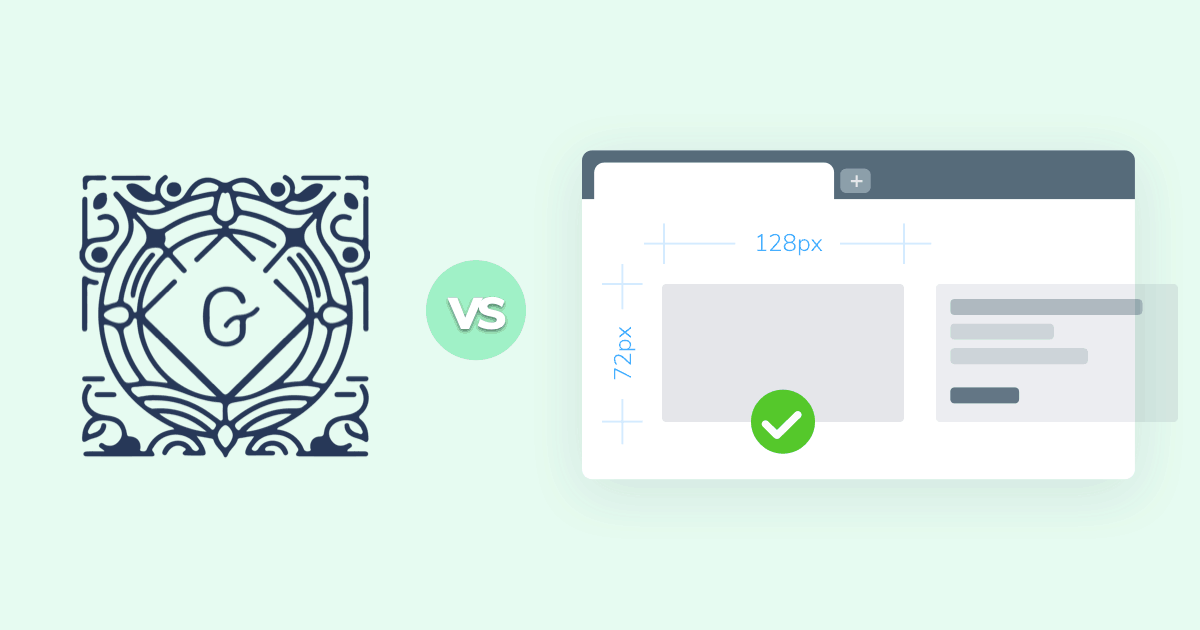

After spending hours researching keyword phrases and diligently refining your SEO strategy, you’re finally ready to pull the trigger on content creation. Once the first articles are released, though, your rank doesn’t budge. Is there something wrong with your keyword selection, or could it be the content itself?
Most site owners are surprised to hear that the quality of the articles on their publication can be at fault for failing to rank for keywords. It’s called thin content, and it’s the silent killer when it comes to SEO success.
#What is Thin Content?
Back in 2011, Google released a search algorithm update known as Google Panda. It’s a cute and cuddly name, for sure, but that doesn’t extend to its activity: the search giant started ruthlessly penalizing websites that featured low-quality, thin content. If Panda decided your site didn’t provide high-value pieces, you could lose an enormous amount of traffic overnight.
Pandas are hungry little creatures. They want the thickest, juiciest leaves and bamboo shoots they can get their paws on. A panda would pick a hearty plant over a scrawny one, just like a web surfer is more interested in a meaty, content-filled article than a pile of keyword spam.
Google’s Panda update reflects this trend away from weak articles and content-light releases. It drops the SEO rating for pieces that fail to deliver what users want, while promoting sites that keep a sharp focus on quality.
Thin content is one of those things you recognize the instant you see it. Google characterizes it based on the following qualities:
- Auto-generated content, including doorway and boilerplate affiliate pages
- Content stolen from external sources
- Low word count articles
- Pages with more advertising than content
- Poorly written pieces, riddled with spelling and grammar mistakes
- Shallow, ambiguous discussion of the topic at hand
- Unoriginal, copy-pasted content.
It may not be the author’s intention to produce thin content, but that doesn’t change how Google Panda chooses how to rank the piece.
#How Thin Content Affects Your Publication
Search engine bots operate using their own set of rules, but their ultimate goal is to curate the web so that people can find what they’re looking for more easily. This includes pruning low-quality thin content out of the mix, promoting articles that are more likely to provide users with the answers they seek.
Google and other search engines look at your website and make a judgement call about your credibility and relevancy in a particular topic. Does your content reflect deep, insightful, and unique knowledge about an industry? Good, that’s what readers are interested in. Your SEO rank for certain keywords is then boosted, making your articles appear at the top of search results where it can draw in tons more clicks.

The more pieces of thin content that populate your website, the less likely is for a search crawler to consider you an authority. If your focus is on revenue instead of value to potential readers, Google will eventually notice, dropping your SEO rank as a result.
It’s tempting to take the inexpensive route and produce short keyword-focused articles that fill your site with some kind of substance. As far as Google is concerned, though, thin content is worse than no content.
#What Does Google Want?
Google’s goal is to give web users exactly what they’re searching for the first time they enter a phrase. Nobody wants to slog through half a dozen pieces of thin content just to find the answer to their question. To that end, the search giant aims to promote rich and insightful articles over keyword spam. The higher the quality of your work, the more likely you are to succeed when Google’s crawler pays you a visit.
The two things to keep in mind when anticipating Google’s desires are meaning and depth. Extensive, well-written articles about a niche topic are greatly rewarded by the search engine’s algorithm. Adding meaningful content, including related pieces that build off of a central theme, are even better.
By ditching the idea of short articles and focusing on deep and meaningful pieces, you can sculpt your publication’s content around long-term success.
#Time to Long Click
The true judge of a site’s worthiness is how people react when they see the content in question. Google’s algorithms may be smart, but they can’t think like a real person. To emulate our behaviors, Google uses a metric called time to long click to measure how valuable a site’s content would be to a pair of human eyes.
A long click is when a user clicks a search engine result, then stays on that page for a long time before returning to Google to search again. This delay takes into consideration the time it would take to read the article, along with clicks that happen inside the page itself. After all, if a site provides honestly valuable content, visitors are much more likely to spend some time exploring its archives, not just pop back to Google for another search.
Conversely, a short click is when a user hits a link and almost immediately hops back to the Google search page. They usually click on another result further down the page, indicating that the site they initially visited offered them little to no value.
So, what does Google want from its highly-ranked pages? A solid time to loooong click, indicating that people are finding what they want on your site and don’t feel the need to go back and perform another search or access a different source.
#How to Identify Thin Content
Google has made it easy to identify thin content violations on your site. If the search company detects pages with little or no value, it will add a notification under the Manual Actions section of your Google Search Console. When that happens, you should immediately dive into your publication’s back-end and take a cold, hard look at what you’re sharing with the world.
Google’s own thin content guidelines outlines several steps you can take to identify and fix thin content. Below are the first steps you should take:
- Look for content on your site that duplicates content found in other pages or posts.
- Check for content pages with little text but multiple affiliate links.
- Look for doorway pages and auto-generated content sitewide.
- Take an honest look at the published pieces on your site and ask if they add significant value for users.
#Fixing Thin Content
Once you’ve located thin content on your website, it’s time to set things right. There’s no reason to burn everything down and start anew. With a little time and effort you can repair these weak links, allowing your SEO rating to naturally rise over time.
#Expand the Content
What happens if you order a meal at a restaurant and only get a plate with a few bites worth of food? You start thinking about what you can add to that “meal” to make it more substantial. The same holds true for thin content. If your offerings are a little less than satisfactory, so it’s time to expand the dish.

Adding to existing content to make it not-so-thin means different things for different pieces. You could add alternative perspectives to the text, bring in new concepts related to the core ideas, add follow-ups to the main narrative, and so on. Length isn’t what’s important, it’s adding value to what’s already there. Think like your readers. What questions would they ask after reading this article, and how can you answer them?
Make sure your idea of “expanding” isn’t just making things more wordy. Stuffing superfluous sentences or repeating paragraphs with rewritten text doesn’t make an article more useful. Both Google and your readers are aware of this, and it’s highly unlikely you’ll get away with it in the long run.
#Replace the Content
There are times when an article is awful beyond repair. No amount of expanding can add value to the text, no amount of replacing or tweaking can convince Google it’s a worthwhile piece. In this case, you might want to take the SEO focus words and simply rewrite the article from scratch.
Yeah, it’s frustrating to think about, but if you focus on providing relevant information with the new draft, you can abolish the thin content penalty, replacing it with a boost in SEO rank instead.
#Remove the Content
Thin content is worse than no content, at least in the eyes of Google. By having low-quality pieces on your publication you are actively penalizing your SEO rank each time a search algorithm crawls by. If you remove that content, you no longer receive that penalty.

If you can’t fix or replace a piece of content on your site, it’s time to cut your losses. Confine the article to the garbage bin and start your SEO research anew. For this round, however, you’ll know what mistakes to avoid so you can climb back on top of those search page results.
#Eliminating Thin Content from the Start
An industry best-practice is, of course, to avoid thin content altogether. This ensures you provide real value to your readers and never have to suffer the SEO penalties of low-quality work. Keep the concepts below in mind when outlining your content strategy and publishing new pieces on your site.
#Think Like a Reader
All of this fuss over algorithms is a means to an end. Google wants the web to be useful to Internet users. Instead of pandering to the search giant’s practices, focus on what potential readers want from your content, then give them exactly that. Guides, step-by-step tutorials, detailed descriptions, caveats, and everything in-between. If you write for your audience, Google will take notice, and your audience will expand little by little.

Another powerful method is to anticipate what a reader might think about after reading something on your site and answer their questions beforehand. This is something an expert in an industry should be able to do.
#Make Time to Long Click a Priority
Google’s click time metric is a surprisingly accurate way of measuring the overall usefulness of a piece of content. By training your attention on practices that encourage users to naturally spend more time on your site, you boost the long click time, sending the clear message to Google that people like what they’re seeing. Better than that, you are actually providing more value to readers, which is the ultimate goal of all of this.
#Focus on Usefulness
What are your keyword targets for the piece in question? Whatever they are, make sure the content itself is razor-focused on this niche. If you’re releasing tutorials on building a PC, keep everything geared towards that purpose. Ask yourself if a newbie clicking on this article would find it useful, then enhance the parts that are, and eliminate the parts that aren’t.
#Article Length is (Mostly) Irrelevant
How long an article is doesn’t necessarily indicate its depth or quality. A 2,000-words piece written by an SEO machine may provide less information than a 500 word article created by an expert. Don’t equate length with quality, and don’t fluff out pieces to meet some arbitrary word count.
#Value above Revenue
Affiliate-heavy content is a clear sign that an article is of low-quality. Make sure your site has a purpose beyond spamming affiliate offerings. Add new offers or information alongside these pieces, and be objective about whether or not there’s a legitimate reason your readers would be interested in the affiliate offerings.
#Final Thoughts
Thin content used to be the bane of the internet’s existence. As companies like Google caught on to the worst of these trends, useful sites were naturally favored over less valuable ones. Algorithmically determining whether or not content is thin is beginning to transform the web, one SEO rating at a time.
As long as you focus on quality, usefulness, and your readers, thin content shouldn’t be a problem. And if it does crop up from time to time, you now have the reasons to cut it down before it harms your site.

